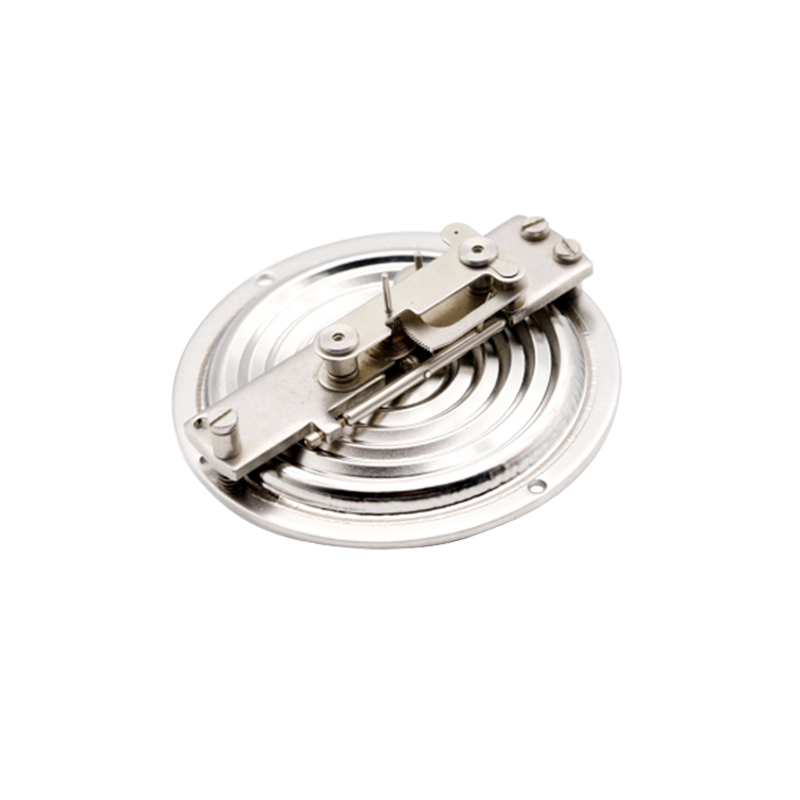
Nov . 08, 2024 07:18 Back to list
Factory Production of Bourdon Type Differential Pressure Gauges for Accurate Measurements
Understanding Bourdon Type Differential Pressure Gauges A Factory Perspective
Bourdon type differential pressure gauges are essential instruments in various industrial applications, providing critical measurements for pressure differences in processes and systems. Understanding their design, functionality, and manufacturing processes is crucial for ensuring accuracy, reliability, and efficiency. In this article, we will explore the intricacies of these gauges from a factory standpoint, detailing their construction, working principles, and applications.
Design and Construction
At the heart of the Bourdon type differential pressure gauge is the Bourdon tube, a hollow, curved metal tube that is sealed at one end and connected to a measuring point at the other. The tube is made of high-quality materials like stainless steel or brass, chosen for their durability and resistance to various environmental factors such as temperature and corrosion. The curvature of the tube is a critical feature; when pressure is applied, the tube tends to straighten, causing the free end to move. This movement is converted into a readable value on a dial.
The gauges usually consist of two pressure sensing points one is connected to the high-pressure side and the other to the low-pressure side. The differential pressure, which is the difference between these two pressures, results in the movement of the Bourdon tube, allowing for accurate readings.
Working Principle
The operational principle of Bourdon type differential pressure gauges is relatively straightforward. When a pressure difference is applied to the two ends of the Bourdon tube, the deformation of the tube linearizes the pressure difference. The movement of the tube is then transmitted through a mechanical link to a pointer that moves over a calibrated scale on the gauge dial, providing a visual representation of the pressure difference.
These gauges can be further equipped with various features to enhance their accuracy and performance. For instance, damping mechanisms may be employed to reduce the effect of pulsations or vibrations in the pressure being measured. Additionally, many gauges are designed to be adjustable, allowing for calibration adjustments to ensure precise measurements.
Manufacturing Process
The manufacturing of Bourdon type differential pressure gauges involves several critical steps, each aiming to ensure the reliability and accuracy of the final product. The process begins with the selection of raw materials, where manufacturers must choose materials that can withstand the specific pressures and environmental conditions for which the gauge is intended.
Once materials are selected, the production process typically includes the following steps
bourdon type differential pressure gauge factory

1. Tube Fabrication The Bourdon tube is crafted into its characteristic shape through processes such as bending, welding, or machining. Precision is vital here, as any imperfections can drastically affect gauge performance.
2. End Sealing The end of the tube is sealed to ensure that the pressure measurement is accurate and that no contaminants can enter.
3. Assembly The individual components, including the Bourdon tube, mechanical linkages, and dial components, are carefully assembled. Attention to detail is crucial during this stage to maintain alignment and calibration.
4. Calibration Each gauge undergoes a calibration process to ensure its readings are precise. This may involve comparing the gauge's output against known standards and making necessary adjustments.
5. Testing The gauges are rigorously tested to validate their performance under various pressure conditions. This step is critical to ensure reliability in real-world applications.
6. Quality Control Finally, a comprehensive quality control process is enacted, ensuring every gauge meets strict industry standards before being shipped out.
Applications
Bourdon type differential pressure gauges are widely used across various industries, including oil and gas, water treatment, chemical processing, and HVAC systems. They play a crucial role in monitoring system performance, ensuring safety, and optimizing processes. By providing real-time data on pressure differentials, these gauges help engineers and operators maintain system integrity and efficiency.
Conclusion
In summary, Bourdon type differential pressure gauges are indispensable tools in modern industrial settings. Understanding their design, working principles, and the meticulous manufacturing processes they undergo is essential for anyone involved in their procurement or application. As industries continue to evolve, these gauges will undoubtedly remain at the forefront of pressure measurement technology, ensuring safety and efficiency across a multitude of applications.
-
High-Precision Mass Diaphragm Pressure Gauge - Reliable & Durable Solutions
NewsJun.10,2025
-
Explain Diaphragm Pressure Gauge Expert Guide, Top Manufacturers & Quotes
NewsJun.10,2025
-
Affordable Differential Pressure Gauge Prices in China Top Manufacturers
NewsJun.10,2025
-
Reliable Water Fire Extinguisher Pressure Gauges for Safety
NewsJun.10,2025
-
Durable Diaphragm Protection Pressure Gauges Get Quote
NewsJun.09,2025
-
WIKA Differential Pressure Gauge with Switch Reliable Monitoring & Control
NewsJun.09,2025
